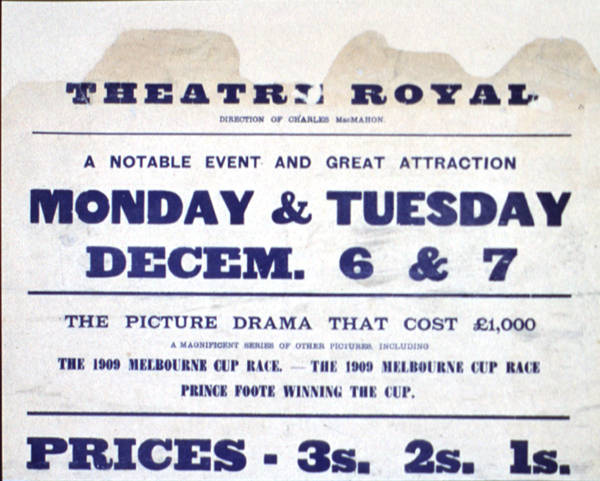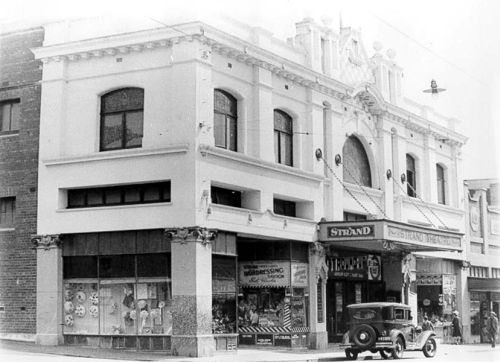 |
 |
|
Picture Theatres
Picture Theatres appeared in Tasmania before the First World War, when silent newsreels then films started to fascinate audiences. Silent films, projected by hand-driven machines, were shown in specially constructed picture palaces such as the Princess Theatre, Brisbane Street, Launceston, 1911; the Palace in Hobart; and North Hobart's Picture Palace, 1913–14. In the 1920s larger picture theatres appeared, including in Hobart the Strand and the Amuzu (formerly a chapel, later the Playhouse). In the late 1920s when 'talkies' took over from silent films more picture theatres appeared in the main population centres, and were particularly important as cheap entertainment in the Depression. Hobart's picture theatres included the Prince of Wales, His Majesty's, the Variety Theatrette (one of the few Australian rear-screen-projection theatres) and the Avalon. Launceston was served by the Majestic, the Plaza and the Star. Suburban and country centres had theatres such as the Lyric (Scottsdale), Plaza (New Norfolk), Paragon and Empire (Queenstown), Gaiety (Zeehan) and Melrose (Glenorchy), or suitably adapted local halls or RSL clubrooms; for example, from 1928 the Bellerive town hall also served as the Regent Cinema. By 1935 the North Hobart Picture Palace was renamed the Liberty, after phases as a live theatre, billiard saloon, gymnasium and boxing arena in the silent-to-sound period.
Travelling picture showmen such as George Bullock showed films in country halls, transporting home-made projectors and carbon arc-lamps in motor vans. Bullock and Olaf (Ollie) Jacobson were among cinema pioneers and developed Tasmania's first locally built talkie-projector. Jacobson, a former projectionist at the Liberty, opened picture theatres in community halls at Ranelagh, Huonville and Kingston immediately after the Second World War. In the 1950s picture theatres prospered as the people's major form of entertainment, and appeared in virtually every suburb and country town. The Liberty was renamed the State in 1948, the Strand became the Odeon (Theatre of Tomorrow) in 1956, and 35-mm films were presented to diverse audiences including university students at the Arts Lecture Theatre, and patients and nursing staff at St John's Park, New Town. Continuous newsreel theatres, both called the Tatler, opened in Hobart and Launceston. For a short period cinema-goers could enjoy open air drive-in cinemas at Glenorchy and Warrane in Hobart, and in Launceston, Devonport and Burnie. To compete with the television phenomenon, Hollywood introduced new wide-screen presentation techniques such as Cinemascope and Vista Vision, and these soon appeared at Hobart's Prince of Wales and Launceston's Princess theatres, closely followed by Jacobson's theatres. But by the 1960s the competition of television was proving too strong, and brought about the demise of the picture-theatre circuit. In Hobart and Launceston, all suburban picture theatres ultimately closed, and one by one major theatres closed too, replaced by a chain operated by Village Cinemas. Few original picture theatre operations have survived, exceptions being the alternative single-screen State Cinema in Hobart, the Hobart Film Society and film societies in Launceston and Ulverstone. New Norfolk's Plaza closed in 2003. Recent developments include new cinema complexes in Glenorchy (four screens), Rosny (four screens), Devonport and Burnie. With few if any exceptions, picture theatres operated with specially constructed projection booths which housed two 35-mm projectors with carbon arc-lamp light sources, and from the late 1970s more reliable Xenon lamps. Projection methods have undergone changes from manual operations to semi- and fully automatic systems. Adrian Jacobson |
Copyright 2006, Centre for Tasmanian Historical Studies |

